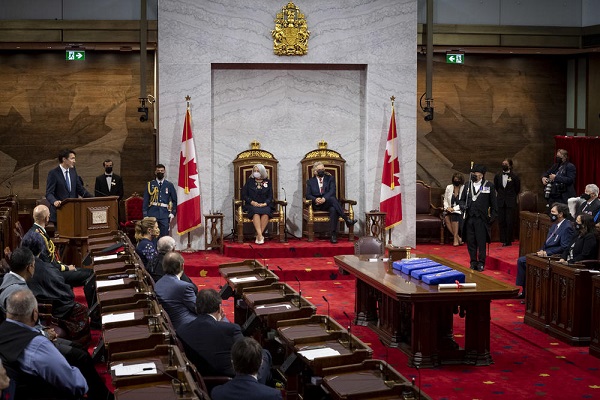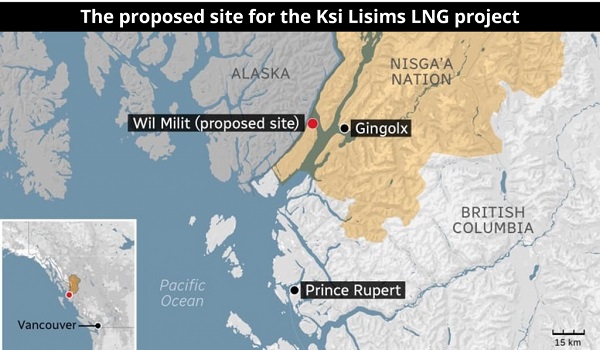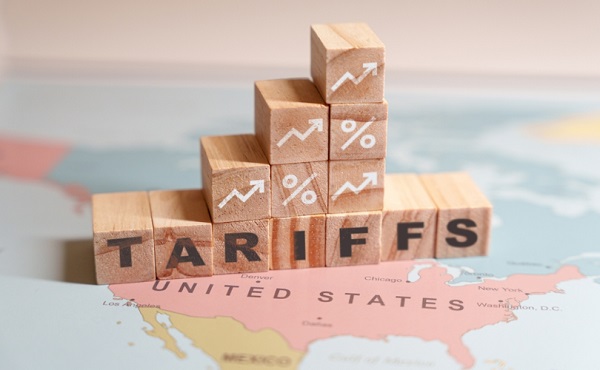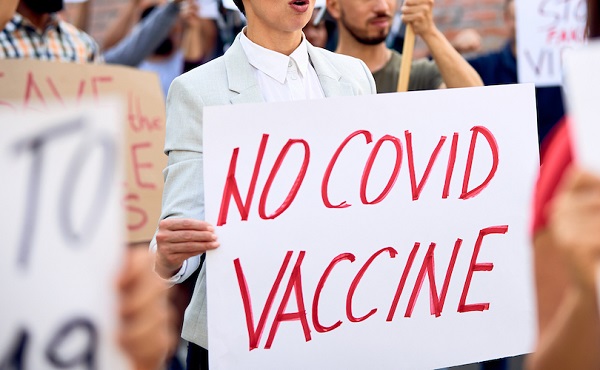National
Governor General gets $11,200 raise in 2024, third pay bump in three years

News release from the Canadian Taxpayers Federation
Author: Franco Terrazzano
The Governor General’s salary has increased by $60,000, or 20 per cent, since 2019.
Governor General Mary Simon received a $11,200 raise in 2024, her third pay bump since being appointed to the role in 2021, driving her salary for this year up to $362,800.
“Canadians are struggling to afford a jug of milk or a package of ground beef, so the government shouldn’t be rubberstamping another raise for the governor general,” said Franco Terrazzano, CTF Federal Director. “Can the government show Canadians how they’re getting more value, because the governor general’s paycheque just went up a thousand dollars a month.”
The Canadian Taxpayers Federation confirmed Simon’s salary and latest raise with the Privy Council Office.
“For 2024, the Governor General’s salary, which is determined in accordance with the provisions of the Governor General’s Act … is $362,800,” a PCO spokesman told the CTF.
The Governor General’s salary has increased by $60,000, or 20 per cent, since 2019. Meanwhile, the average annual salary among full-time workers is less than $70,000, according to Statistics Canada data.
Table: Annual Governor General salary, per PCO data
|
Year |
GG salary |
|
2024 |
$362,800 |
|
2023 |
$351,600 |
|
2022 |
$342,100 |
|
2021 |
$328,700 |
|
2020 |
$310,100 |
|
2019 |
$302,800 |
On top of the $362,800 annual salary, the governor general receives a range of lavish perks, including a taxpayer-funded mansion, a platinum pension, a generous retirement allowance, a clothing budget, paid dry cleaning services and travel expenses.
Former governors general are also eligible for a full pension, of about $150,000 a year, regardless of how long they serve in office.
Even though Simon’s predecessor, Julie Payette, served in the role for a little more than three years, she will receive an estimated $4.8 million if she collects her pension till the age of 90.
The CTF estimates that Canada’s five living former governors general will receive more than $18 million if they continue to collect their pensions till the age of 90.
Former governors general can also expense taxpayers up to $206,000 annually for the rest of their lives, continuing up to six months after their deaths.
In May 2023, the National Post reported the governor general can expense up to $130,000 in clothing during their five-year mandates, with a $60,000 cap during the first year.
Simon and Payette combined to expense $88,000 in clothing to taxpayers since 2017, including a velvet dress with silk lining, designer gloves, suits, shoes and scarves, among other items.
Rideau Hall expensed $117,000 in dry-cleaning services since 2018, despite having in-house staff responsible for laundry. That’s an average dry cleaning tab of more than $1,800 per month.
It’s also enough money to dry clean 13,831 blouses, 6,204 dresses or 3,918 duvets, according to the prices at Majestic Cleaners in Ottawa.
In 2022, Simon’s first full year on the job, she spent $2.7 million on travel, according to government records obtained by the CTF.
Simon’s travel has sparked multiple controversies, including her nearly six-figure in-flight catering tab during a weeklong trip to the Middle East, and her $71,000 bill at IceLimo Luxury Travel during a four-day trip to Iceland.
In the aftermath of the scandals, a parliamentary committee recommended a range of reforms to the governor general’s travel budget, including a regular review of the cost-effectiveness of trips, a reduction in the size of delegations and less spending on snacks and drinks.
“The platinum pay and perks for the governor general should have been reined in years ago,” Terrazzano said. “A serious government would mandate the governor general’s office be subject to access-to-information requests, cut all international travel except for meetings with the monarchy, end the expense account for former governors general, reform the pension and scrap the clothing allowance.”
Economy
Governments across Canada should prioritize energy infrastructure—including pipelines

From the Fraser Institute
By Tegan Hill and Elmira Aliakbari
In a recent meeting with Prime Minister Mark Carney, the provincial premiers discussed major infrastructure and energy projects to be fast-tracked through a new federal approval process. While the general sentiment was that the meeting was productive and collaborative, the British Columbia government seemingly shot down Alberta’s proposed pipeline to B.C.’s northern coast. This political resistance to new pipeline infrastructure overlooks the positive potential impact such projects could have for Canada and beyond.
Prime Minister Carney plans to table legislation that would create a new major projects office tasked with reducing approval times from five to two years, among other measures. Major projects must meet numerous criteria before deemed in the “national interest” and expedited. The premiers have compiled a short-list of projects for consideration though the full list has not been publicly released.
Alberta Premier Danielle Smith’s proposed pipeline would transfer bitumen to the Port of Prince Rupert in B.C., which would open up access to Asian markets. B.C. Deputy Premier Niki Sharma, who attended the recent meeting in place of B.C. Premier David Eby, said the proposal has “no proponent” at this stage and that her government plans to focus on “shovel-ready projects.”
And it isn’t just the Eby government resisting the project—Steven Guilbeault, a member of Carney’s cabinet, recently dismissed the need for additional pipeline infrastructure, including to B.C.’s coast, based on incorrect information about the Trans Mountain pipeline’s capacity and future oil demand.
Again, this political resistance ignores key facts about Canada’s energy sector, including our current overreliance on a single customer. Currently, 97 per cent of our oil exports go to the United States. This heavy reliance on the U.S. market has made Canada vulnerable to U.S. policy changes, as highlighted by the recent threat of tariffs on Canadian energy. Expanding pipeline infrastructure—both westward, as proposed by Premier Smith, and eastward—would help us diversify our export market and allow Canada to reach customers in Asia and Europe.
And pipeline expansion is not just about exports; it’s also about enhancing energy security at home. Some parts of our country, namely Ontario and Quebec, remain heavily dependent on U.S. pipelines to meet their energy needs. Specifically, due to the lack of an west-east pipeline dedicated to oil, for more than 70 years Canadian oil extracted in Alberta has passed through the U.S. via Enbridge’s network before returning to Ontario.
Finally, this discussion shouldn’t be limited to oil. There is and will continue to be strong demand for liquefied natural gas (LNG) in many parts of the world, including in Asia, for many years to come, which presents Canada with a significant opportunity to become a major LNG exporter and provide cleaner-burning fuel to countries such as China and India. However, building the necessary infrastructure (pipelines and LNG terminals) is critical if we’re serious about seizing this opportunity.
Governments across Canada should support critical energy infrastructure, including pipelines. This means putting politics aside and recognizing the importance of infrastructure in expanding export opportunities, ensuring energy security, reducing global emissions and creating prosperity across the country.
COVID-19
A COVID-19 day of reckoning is long overdue

This article supplied by Troy Media.
 By Perry Kinkaide
By Perry Kinkaide
Our youth are facing mental health struggles, disrupted education, and stunted social development due to Canada’s failed pandemic policies
The evidence is irrefutable: Canada’s response to COVID-19 betrayed its youth. Policies like school closures, social isolation and activity restrictions, meant to protect, ended up stunting the social, emotional and educational development of an entire generation.
While many adults navigated the pandemic with relative ease, Canadian youth, biologically the least vulnerable, suffered disproportionately. The damage is still unfolding, leaving lasting effects on their mental health, education and social development.
Young Canadians are now bearing the psychological and social scars of these misguided policies. Mental health struggles surged, with anxiety, depression and social isolation peaking in the years following the onset of the pandemic.
Research from the Québec Resilience Project confirms this, showing that mental health challenges among adolescents have remained high, even after restrictions were finally lifted. These struggles were not caused by the virus itself, but by the policies meant to protect them.
The impact is stark when compared to other countries. In nations like Sweden, Finland and Norway, where schools remained open, youth experienced far less disruption. They were able to maintain social connections, mental stability and routines—key to preserving their development during the pandemic.
By contrast, Canadian youth endured some of the longest school closures, with Ontario shutting down schools for over 26 weeks, more than double the global average. Canada’s extended school closures and social isolation were a profound misjudgment, failing to prioritize youth well-being.
While many youth were harmed, some were able to adapt and overcome the impact. Some, particularly those with strong family support, resilient routines and access to digital learning tools, adapted remarkably. Resilience, however, is not just an individual trait; it reflects the support systems in place. Those with resources to maintain normalcy were better able to recover, while those without such support were left behind.
The crisis has shown that the challenges facing youth are far more complex than originally thought. A generation is now grappling with emotional disengagement, academic delays and difficulties forming meaningful relationships. These issues will have long-term consequences, affecting not only their personal lives but also the broader Canadian economy.
We must recognize the full impact of these setbacks, especially regarding education and workforce readiness. The mental and social toll of these
disruptions will be felt for years to come.
This failure was not just the result of reactive public health policies; it was a failure of a system that de-prioritized youth needs. Young people were treated as threats to public health rather than as citizens with developmental needs. Adult focused activities, such as retail and liquor stores, remained open, while schools, sports and social activities—essential for youth development—were shut down.
This policy overreach wasn’t just avoidable; it was a betrayal of the next generation.
Now, as we emerge from this crisis, Canada faces a crucial choice: ignore the long-term consequences or confront the painful reality of how we failed our youth. The damage is not just a public health issue—it’s a societal one, impacting the mental and emotional well-being of an entire generation. Canada owes its youth more than apologies. It owes them a future free from the mistakes of the past.
Governments, educators, mental health systems and communities must step up—not just with lip service, but with meaningful action. We must rebuild the systems that support youth development, ensuring that this generation is not defined by the failed policies that stunted their growth.
The clock is ticking, and the question is no longer “What happened to our youth?” It’s “What are we doing to ensure this never happens again?”
Dr. Perry Kinkaide is a visionary leader and change agent. Since retiring in 2001, he has served as an advisor and director for various organizations and founded the Alberta Council of Technologies Society in 2005. Previously, he held leadership roles at KPMG Consulting and the Alberta Government. He holds a BA from Colgate University and an MSc and PhD in Brain Research from the University of Alberta
Troy Media empowers Canadian community news outlets by providing independent, insightful analysis and commentary. Our mission is to support local media in helping Canadians stay informed and engaged by delivering reliable content that strengthens community connections and deepens understanding across the country
-

 Energy1 day ago
Energy1 day agoSending natural gas pipeline project back for environmental review could put $20 billion investment at risk
-

 Crime2 days ago
Crime2 days agoExclusive Analysis: Chinese Couple Smuggled ‘Agroterrorism Weapon’ Fungus into U.S., Echoing Winnipeg Lab Ebola Espionage Case
-

 Daily Caller2 days ago
Daily Caller2 days agoScott Jennings Dunks Head In Trash Can Upon Mention Of Trump-Musk Feud
-

 Economy12 hours ago
Economy12 hours agoGovernments across Canada should prioritize energy infrastructure—including pipelines
-

 COVID-191 day ago
COVID-191 day agoCOVID-censured doctor says Liberals targeted him because he made government look bad
-

 National1 day ago
National1 day agoCarney’s leadership style will make or break Canada’s future
-

 International2 days ago
International2 days agoMusk claims Trump is named in Epstein files after Trump says Elon went ‘CRAZY’
-

 Business13 hours ago
Business13 hours agoBeef is becoming a luxury item in Canada





